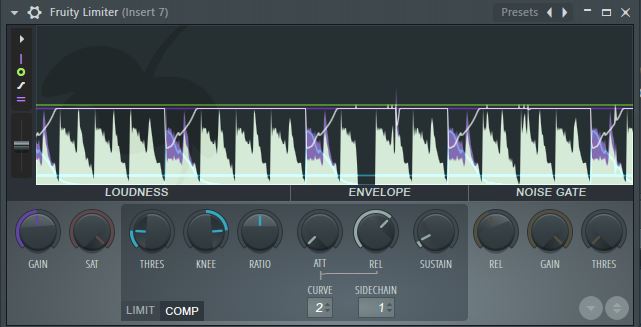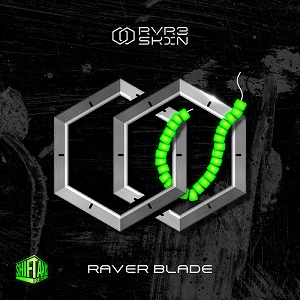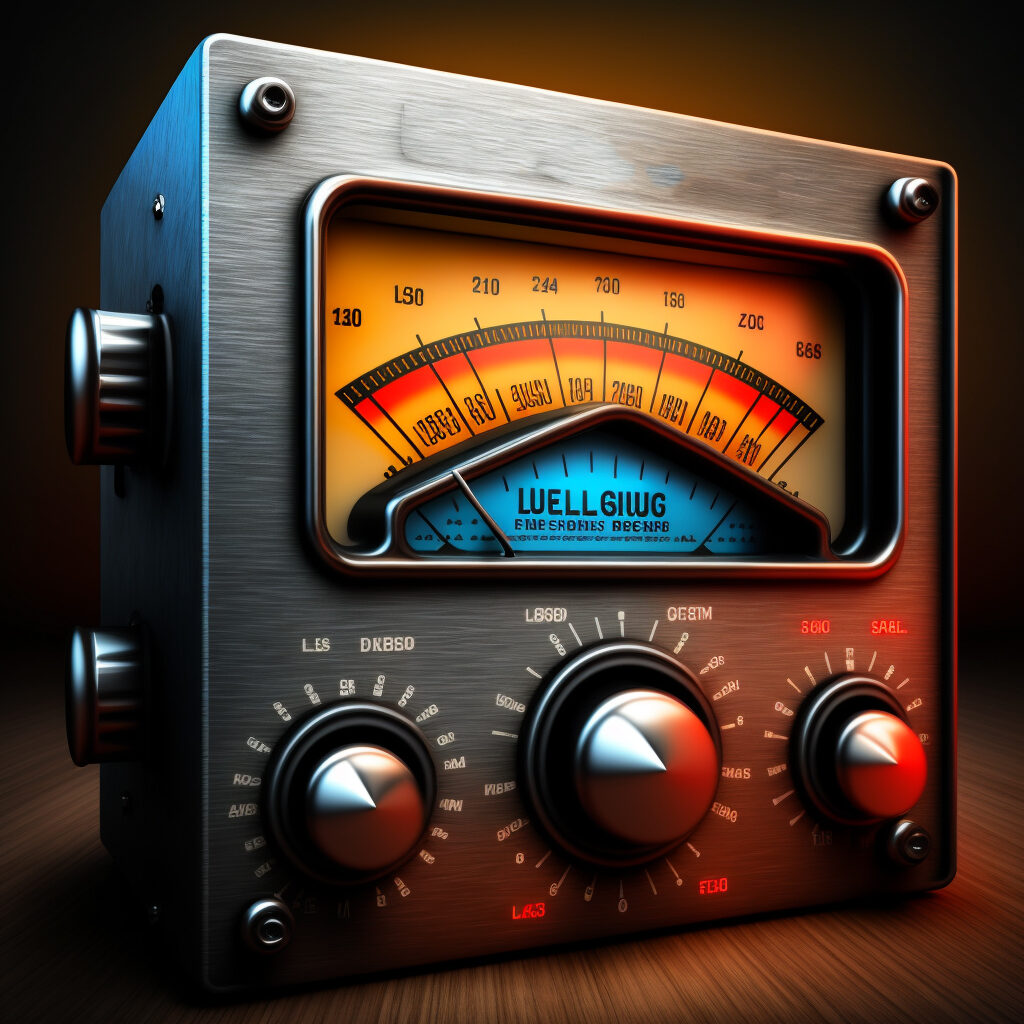
Introduction
Using sidechain compression can help any audio standout better in a mix, not just the kick. In this tutorial I will show you why I might sidechain to something other than a kick. The main thing to understand is the versatility and usefulness of sidechain compression, and that it is not just for kick drums.
Using a controller track like a snare, can reduce the volume of competing sounds or frequencies to allow the more important or focal sounds/tracks to stand out in your mix.
By utilizing compression (“ducking”) and placing sidechain compression on a ride or hat instrument, for instance, the controller track, the snare, can control the volume reduction, of the hats and ride, to reduce the conflict between those tracks so that the snare can stand out in the mix.
Again, this can be done with any instrument track. Typically instrument tracks I use as controller tracks for sidechain compression are kick drums, vocals lead melodies, upper frequency drums, or any track that is being layered with multiple layers to create the one final sound. Don’t be scared to experiment.
Rules To Follow
A good rule of thumb to follow, is to start with lower settings then slowly increase until you can hear the effect, then back off slightly until you don’t. I do this with every adjustment I make, in mixing, mastering and sound design.
What is sidechain
If you are unfamiliar with sidechain compression, there are several tutorials on the web that go into more detail. However simply put, sidechain compression ducks (reduces volume) of the effected instrument track based on a trigger track (typically a kick drum).
Most mixing engineers or producers’ duck others sound (i.e., bass, sub bass) triggered by the kick. This will allow the kick to standout, sound more dynamic and punchier in a mix, while still maintaining the overall color and sound of the instrument tracks being side-chained or ducked.
This is best used when the mixing engineer doesn’t want to color (add or take away frequencies) which ultimately degrades the original sound on the instrument layer.
When you have a lot of low-end frequencies layered in a mix, all of these layers tend to muddy up the mix weighing down the mix, reducing the accumulated power of each layer (i.e., reducing the volume output). The low-end typically carries more weight in the mix, so, it is customary to sidechain anything with low end frequency representation to the kick to free up space for the kick, the most predominant sound in dance music, for instance. This allows the kick the standout.
This technique can be used in any genre as it is a great way to keep your kick punchy when you have lots of competing frequency track layers.
Who Uses This Technique?
This same technique can be used on any sound that you want to stand out, over any competing audio. For example, radio DJs or YouTube content creators would typically use this effect on their voice, to automatically reduce the volume of background music while they speak over it. This reduces the need to manually turn down the volume each time you want to speak, allowing to manipulate the volume reduction and gain more quickly and easily.
Why Use Sidechain This Way
When mixing instrument tracks that have a lot of similar, overlapping frequency presence, like snare drums, high hats, crashes, cymbals and rides. It can become very tedious of a task to mix each and every layer perfectly with surgical EQ. This can become such a ridiculously, time-consuming task.
This doesn’t mean I cheat myself in the mix and forgo the usage of surgical EQ, but this does make my job that much easier, when I do.
Make sure you adjust your settings specific to the instrument you are using. Do not duck so much so, that your sounds become inaudible or lose dynamics.
Beginner Mistakes
Most of the time, beginning engineers, will over-mix or do too much mixing to a sound, because they are afraid of frequency conflict and are unsure of their technique. When you do too much, you ruin, take away from the sound. You color the sound in an unnatural way or take away some of the important frequencies of the sound that will leave it sounding dull, thin and lifeless. Using sidechain in this manner allows you to mix without killing your audio.
Ever mix a track completely, you applied all the techniques by the book and cleaned so much so that you spent hours working on the track. Just to find out that when compared to other commercial tracks, your mix sounds like it is still missing something? This is almost always the reason why. Too much mixing or over-mixing will color the sound in a negative way. Yes, when starting out I heard many people tell me, my music was, “too clean”. This is why.
Put into practice
Let’s take the drums that I used in my previous tutorial “Fatten Sound Using Delay“. In this audio example, you will hear what the drum loop sounds like. It features a kick, snare, hats and ride track. There is no sidechain applied to this drum loop just yet.
Notice how each time the snare plays, along with the overlapping hats and ride, the snare hit sounds harsh to the ears. This is the clash of a messy upper frequency range. It may not sound terrible now, but it will once a limiter is applied to the master output of the final master of the song, this harshness will be amplified.
Listen for how the snare loses dynamic punch. Listen to how it sounds harsher, loses punch. Keep in mind this will result in the snare feeling less powerful making it not standout once played on a good quality sound system.
When you listen to the example below, listen for the harshness of the snare.
Drums Audio Example
Now listen to the same drum loop, but with sidechain compression placed on the hats and ride, triggered by the sound of the snare. Notice how punchy and clear the snare is. Also notice how it appears more pleasant to the ears. This is because it is more separated from the hats and ride.
This is an extreme setting to emphasize the effect. My settings may or may not be this extreme in practice.
All of this was done in a matter of seconds and did not require much work with equalization. I normally wouldn’t use this extreme of a setting, but I wanted to make sure the effect could be heard.
This doesn’t mean that you shouldn’t use surgical eq to clean your tracks. You should simply try adding this technique to make the whole process easier, and a lot cleaner.
Important Note
It’s important to note that once you add this technique to your mix, the track that is the trigger or controller to the sidechain, in this case the snare, will automatically be louder in this mix. When you remove or reduce volume of competing frequency tracks, the volume of the unaffected sound will have more room to breathe.
Think of it like this, when you have several layers of sound, all occurring in the same frequency space, they sit on top of each other, which weights the entire frequency range down. The more sound you pile on top of each other, the heavier they get, reducing the resulting volume.
To fix this, you need to remove or reduce the weight of layers all occurring at the same time, so that the focal instrument (in this case our controller sound, the snare) can rise to the top and stand out. The technical term here is “breathe in the mix”.
Just be aware this volume increase happens 100% of the time. Sometimes it will readjust your mix, so that the “controller sound” (in this case the snare) will stand out too much. Make sure that you adjust the volume of your controller track down as a result to compensate for it being too loud in your mix. Sometimes it works out perfectly so no need to adjust. Just trust your ears.
If you apply this technique to your mixes, I promise you, they will sound smoother and cleaner. This is my guarantee to you! Don’t forget, a little goes a long way!
Experiment Some
Don’t be afraid to experiment with this technique. As the possibilities are endless.
Hope this helps someone out there… in search of the ever-elusive perfect mix!






Leave a Reply